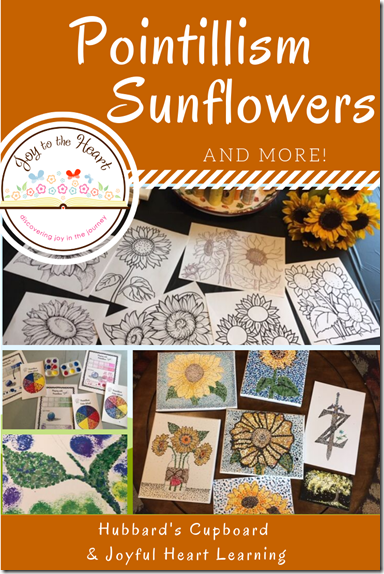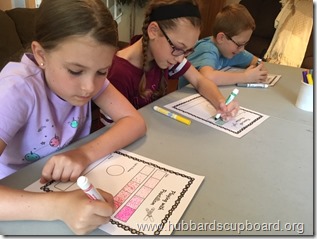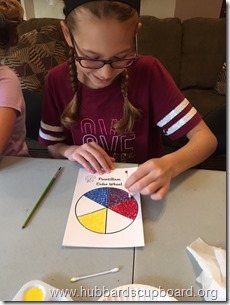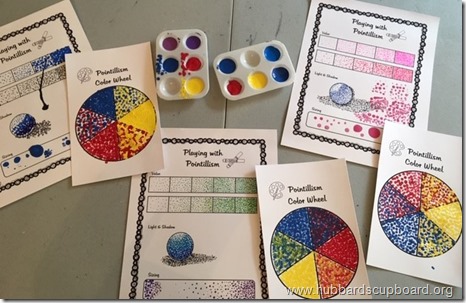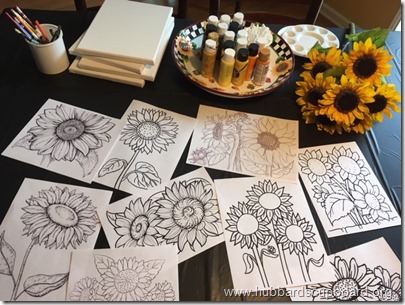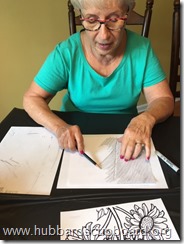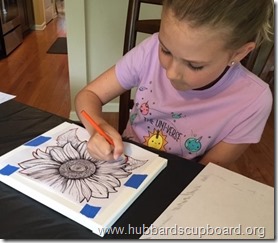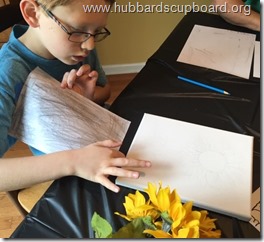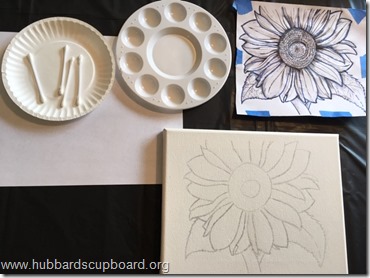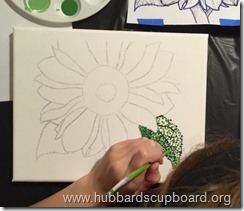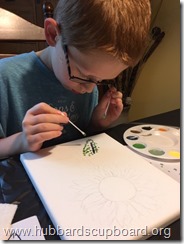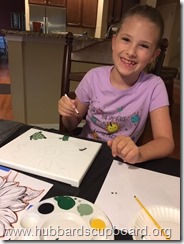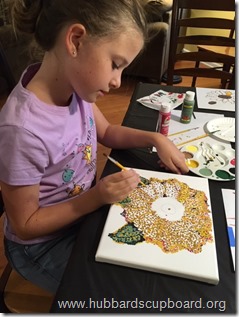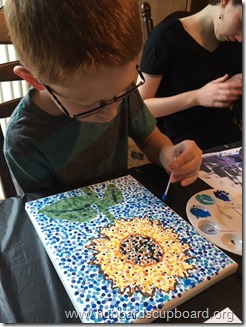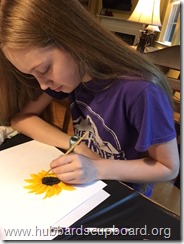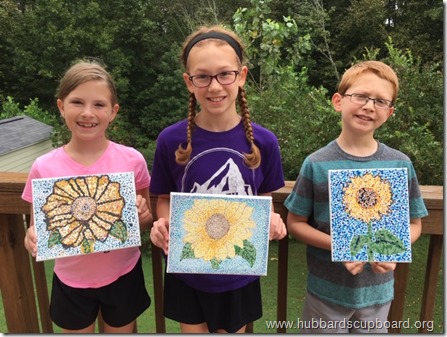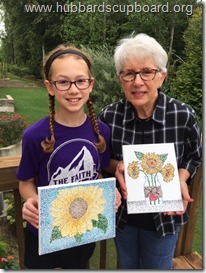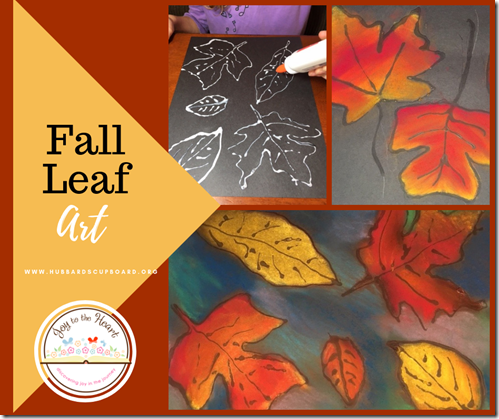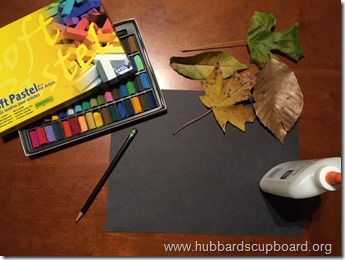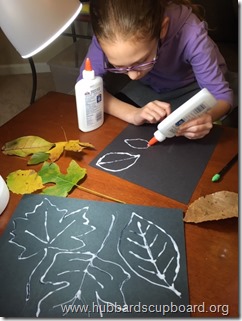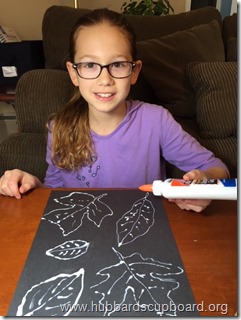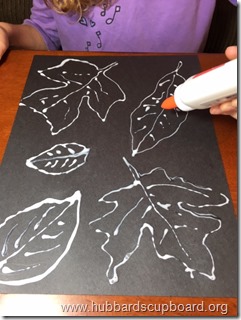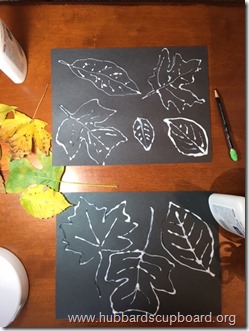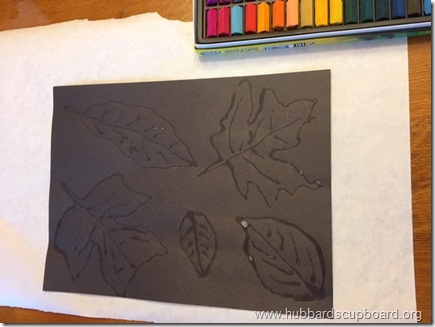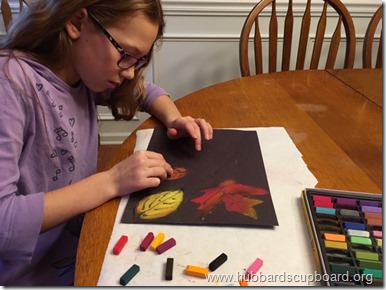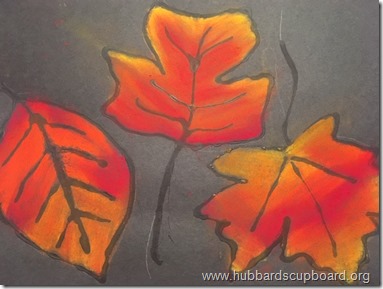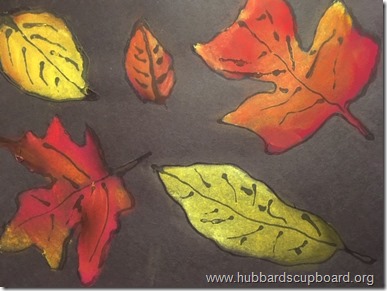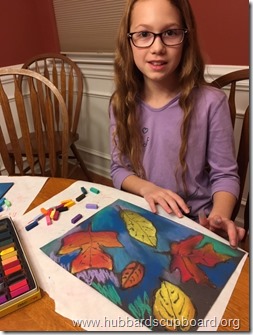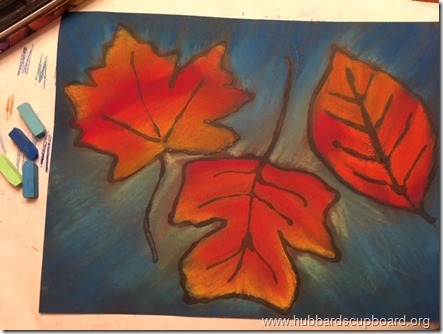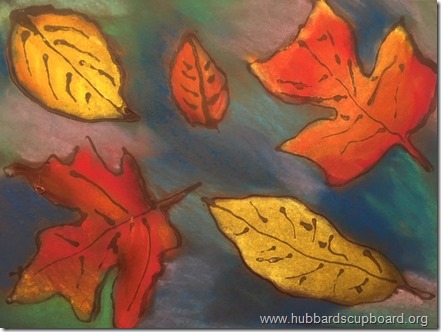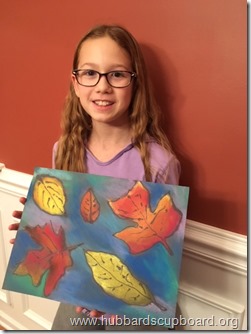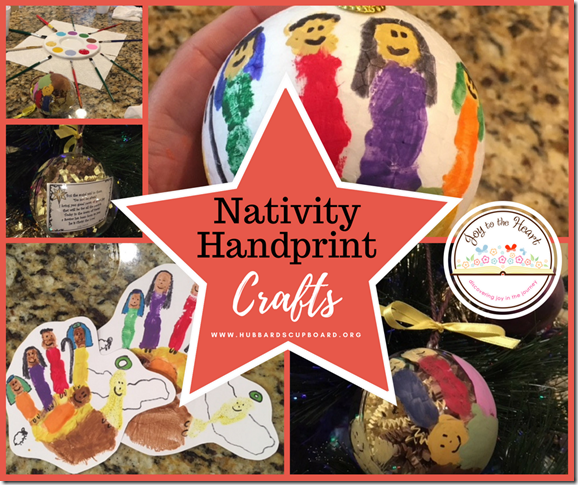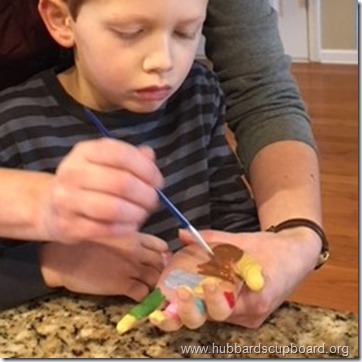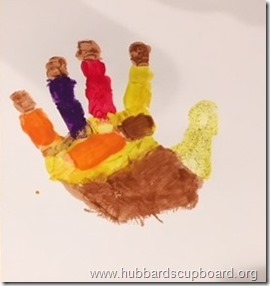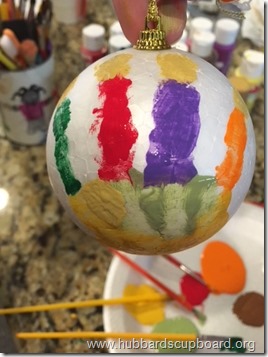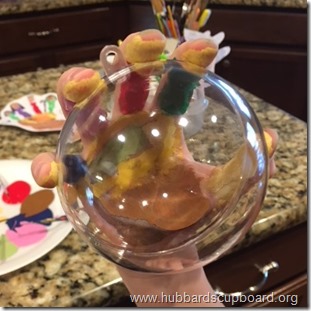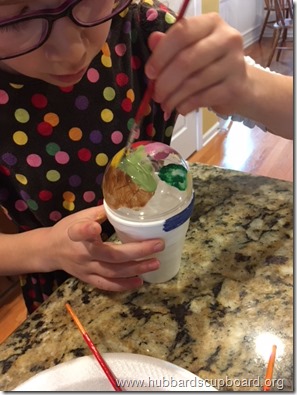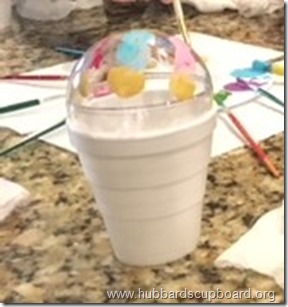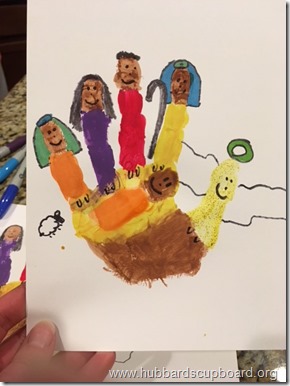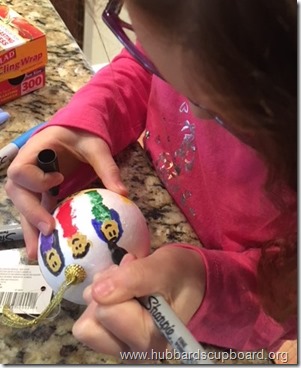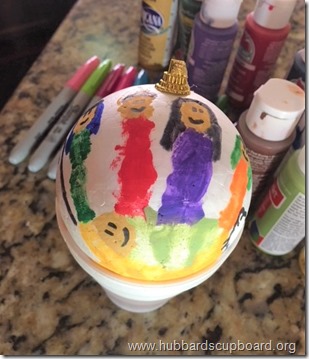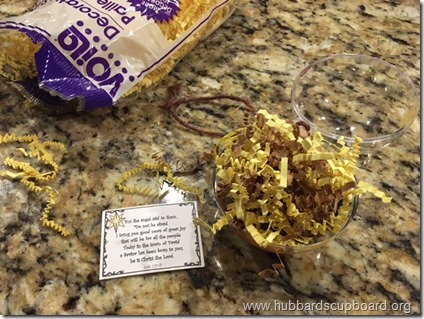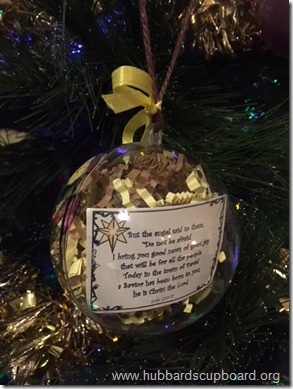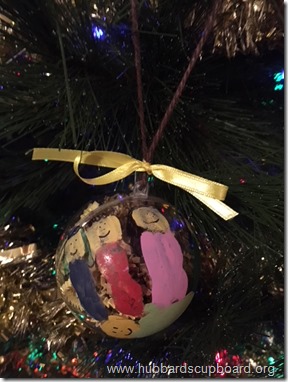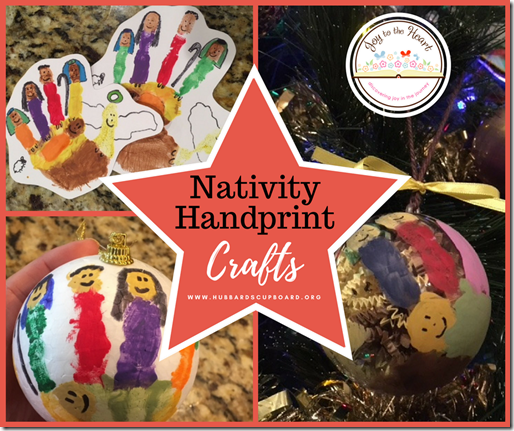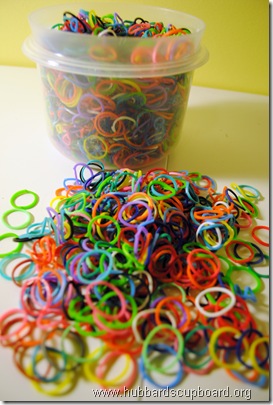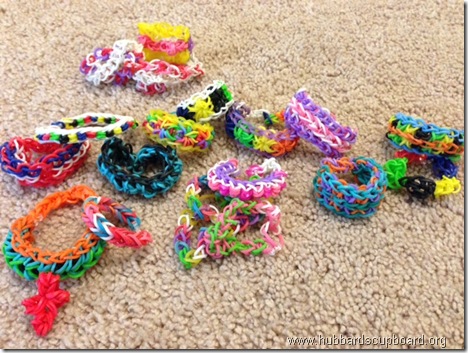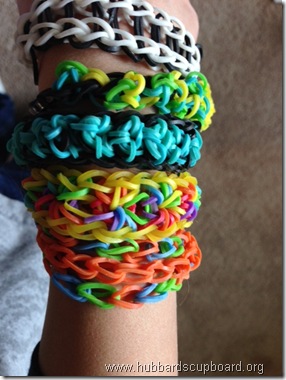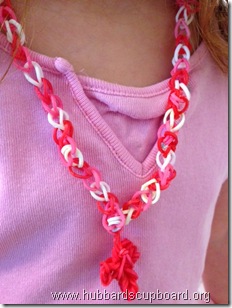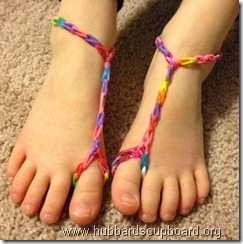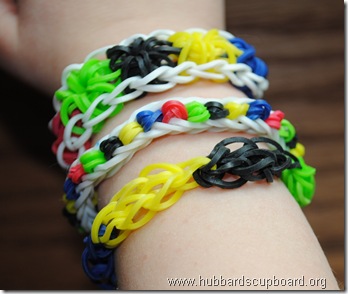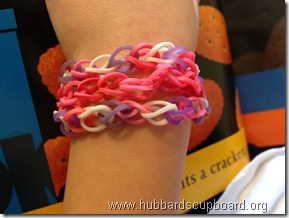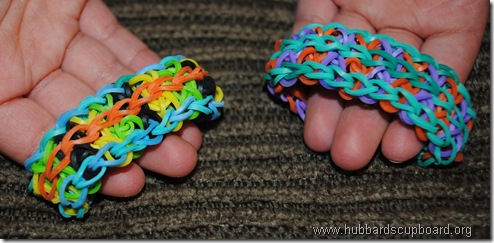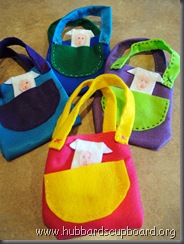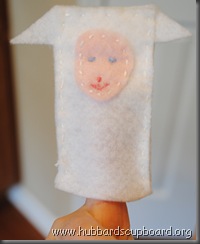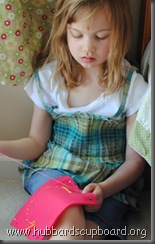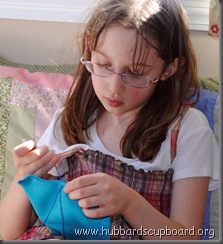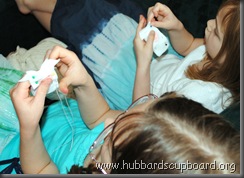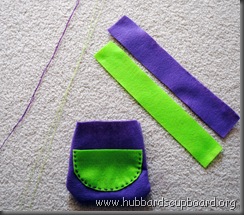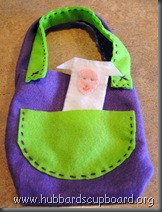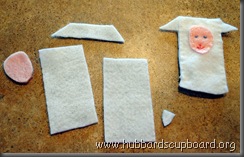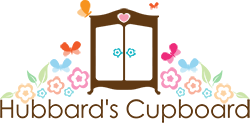What began as an afternoon lesson for three children on the style and technique of pointillism turned into an enjoyable family art affair of pointillism and more!
We began by watching an art student’s tutorial on pointillism – learning briefly about Georges Seurat, seeing how to make a color wheel, learning how to create a graphite transfer, and being inspired by an elaborate pointillism Taj Mahal.
Next, we practiced the technique of pointillism by using markers and following along with another tutorial.
We also experimented with various sizes of tips – ends of paintbrushes, Q-tips, erasers, and small stamp sponges.
Next, we got out our primary colored acrylic paints and set to work creating a pointillism color wheel.
After all of that practice, we were ready to jump into our main project (and grandma joined us, too).
Step 1- Choose a sunflower!
Step 2 – Create a Graphite Transfer
Step 3 – Ready to Paint!
Step 4 – Add dots
and dots…
and more dots!
We discovered that this type of painting requires a great deal of patience and perseverance!
Up until this stage of our project, the kids were very focused and only wanted a few pauses for stretching and a snack. They were highly engaged and motivated!
After an overnight break, we started up again the next morning…
to add more dots!
At various points, the older kids in our family decided to join in on the fun, too! One chose to utilize the graphite transfer technique with a different image, one chose to use the graphite technique followed by regular painting, and one used a combination of brush stroke painting and pointillism.
Our completed pointillism sunflowers!
And more!
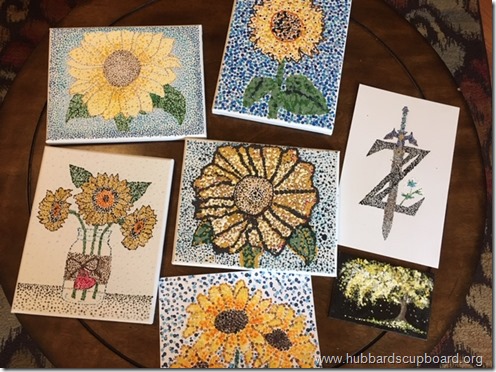
We had a wide age range of artists – elementary, middle school, high school, mom, and grandma. Above, are some of our artists’ completed works! Each of us experienced such a satisfying and relaxing time with family and friends as we let our creative expression flow!
